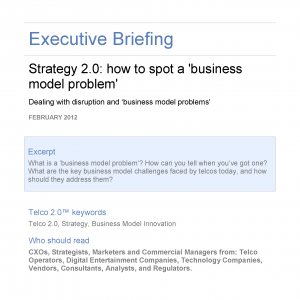Sale!
Network slicing: The greatest thing since sliced bread?
Original price was: £3,000.00.£1,000.00Current price is: £1,000.00. excl VAT
Network Slicing is a way to run multiple networks on one infrastructure. In theory, it could mean that telcos could run mobile broadband and IoT networks over the same physical network, and also offer greater agility within those networks. We explore the theory and its challenges, examine use cases, what would be needed to make it happen, and look at five business case scenarios.
Description
Format: PDF filePages: 40 pagesCharts: 27Author: STL Research TeamPublication Date: March 2017
Table of contents
- Executive Summary
- Introduction
- Slicing: a vision for fundamental transformation
- Defining slicing is not about the ‘what’, it’s the ‘how’
- How slicing could enable growth
- New services from network slicing
- Evidence of the demand for slicing
- Examples of new services
- The slicing business models
- So, where is the money?
- Scenarios for the telco of the future
- The scenarios imply different business models and ways of making money…
- How slicing might work in practice
- Key challenges to achieving slicing
- Early 5G trials and proofs of concept
- The evolution to slicing
- A tricky transition with major obstacles to address
- Conclusion
Table of Figures
- Figure 1: Benefits of network slicing
- Figure 2: How might (operator) assets translate into demand for slices?
- Figure 3: ‘External’ slicing business models
- Figure 4: 68 major telecoms groups – aggregate telecoms revenue, 2009-16
- Figure 5: UK mobile ARPUs and data volumes, 2013-15
- Figure 6: Forecast revenues for converged telco in advanced market
- Figure 7: With slicing, networks can be adapted to customers and applications
- Figure 8: Diagram of slicing
- Figure 9: Network slicing compared with existing technologies and services
- Figure 10: Potential benefits of network slicing for network operators
- Figure 11: Google Chrome’s release channels – a model for network development?
- Figure 12: How operating models could change under network slicing
- Figure 13: How might (operator) assets translate into demand for slices?
- Figure 14: Example 1 – Emergency Services VMNO
- Figure 15: Example 2 – Low Power IoT Service
- Figure 16: Example 3 – Pop-up Network
- Figure 17: Example 4 – Global Streaming Service
- Figure 18: Example 5 – Smart Meters
- Figure 19: Example 6 – Renewable Energy
- Figure 20: Example 7 – Mining
- Figure 21: Slicing Business Models
- Figure 22: Mapping out the scenarios
- Figure 23: Where will revenues come from?
- Figure 24: Traditional telco cost structure and operating model is set up to operate networks not innovate in services
- Figure 25: Under the slicing scenarios, the cost structures shift accordingly
- Figure 26: Challenges identified from interview programme
- Figure 27: Phases of network transformation for slicing future
Technologies and industry terms referenced include: 4G, 5G, business models, IoT, LoRa, MVNO, NaaS, Network slicing, SD-WAN, Strategy, Use cases, VPN


